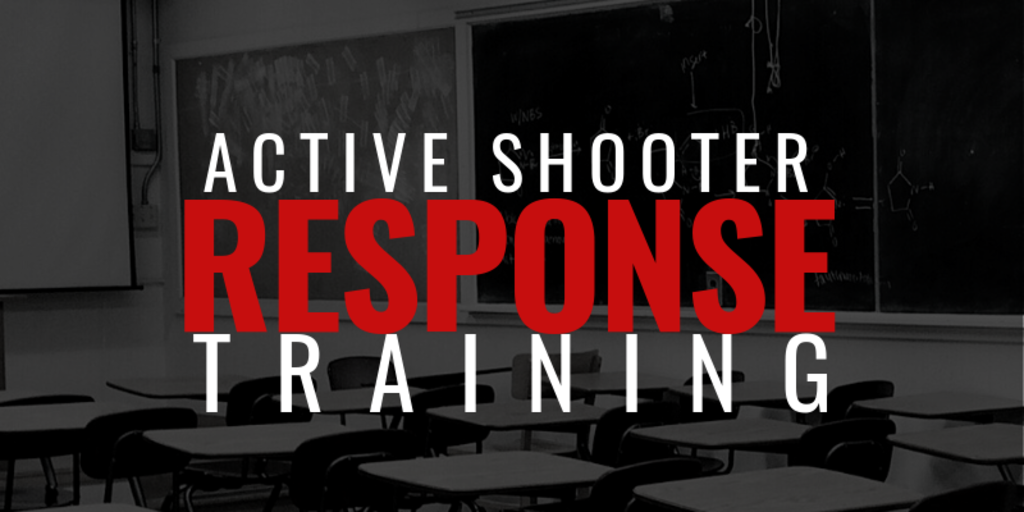Ideal Practices for Applying Active Shooter Training in Your Firm
Ideal Practices for Applying Active Shooter Training in Your Firm
Blog Article
Implementing Energetic Shooter Training: Finest Practices for Creating a Safe and Prepared Community Atmosphere
As communities challenge the upsetting truth of active shooter events, the implementation of thorough training programs comes to be vital. What are the vital aspects that can transform a basic training program right into a durable model for area durability?

Understanding the Demand for Training
In an era marked by boosting cases of physical violence in public spaces, comprehending the requirement for energetic shooter training has actually never ever been extra crucial. Detailed training campaigns can outfit individuals with the expertise and abilities to react emphatically.
Moreover, the psychological impact of violence on individuals and communities can not be overstated. Training fosters a feeling of empowerment and readiness, enabling people to really feel even more secure in their surroundings. It also promotes a culture of security, where awareness and watchfulness come to be indispensable parts of day-to-day live. The advantages of active shooter training extend beyond immediate reaction; they include enhancing interaction procedures and enhancing general precaution within companies.
Key Components of Effective Programs
Reliable active shooter training programs include a number of key parts that improve preparedness and feedback abilities. Detailed curriculum advancement is essential, making sure that training content is appropriate, evidence-based, and customized to the particular demands of the organization or neighborhood. This consists of understanding the characteristics of energetic shooter events and the emotional impact on individuals entailed.
Second, reasonable training circumstances should be utilized to imitate potential circumstances, permitting individuals to practice decision-making and action approaches in a controlled atmosphere. These drills assist in muscular tissue memory and build confidence among individuals.
Third, a concentrate on communication procedures is essential. Developing clear lines of communication among legislation enforcement, emergency situation -responders, and individuals ensures coordinated actions throughout a case. Regular updates and correspondence course aid maintain communication pathways clear and efficient.
4th, ongoing evaluation and responses systems need to be integrated into the training program - active shooter training. Analyzing the effectiveness of training via individual comments and performance metrics permits for constant improvement
Lastly, cultivating a culture of safety and readiness within the area urges alertness and aggressive procedures, making certain that people are not just skilled but also taken part in keeping a safe and secure setting.
Engaging Neighborhood Stakeholders

To successfully engage these stakeholders, it is vital to communicate the purposes and benefits of the training. Holding educational sessions can assist make clear the training's purpose, address worries, and outline the functions each stakeholder might play. Developing a stakeholder advisory committee can promote ongoing dialogue, enabling for varied viewpoints and insights to be integrated into the training program.
Building connections with community leaders and organizations is likewise essential. Their support More Info can enhance outreach efforts, boost engagement, and ensure that training is tailored to the special demands of the area. In addition, stakeholders can assist in disseminating information and resources, strengthening the message of security and readiness.
Eventually, involving area stakeholders not only enhances the training effort yet additionally grows a sense of ownership amongst residents, resulting in a more resilient and informed community capable of responding effectively to potential threats.
Training Delivery Approaches
Using a variety of training distribution approaches is important to fit the diverse learning designs and requirements of participants in energetic shooter training programs (active shooter training). Reliable training can take a number of types, including talks, hands-on simulations, online components, and interactive workshops. Each technique serves an unique objective and can improve the overall understanding experience

On the internet modules supply adaptability and accessibility, allowing individuals to discover at their own rate. These can include video clips, quizzes, and discussions to evaluate understanding. Interactive workshops urge seminar and problem-solving, promoting team effort and interaction abilities.
Including a blended method that integrates these techniques not just improves the training experience yet additionally guarantees that participants are much better prepared to react properly in the occasion of an energetic shooter scenario (active shooter training). By resolving various learning preferences, organizations can create a more informed and responsive community
Continuous Assessment and Enhancement
Routine evaluation and enhancement of active shooter training programs are important to preserving their significance and effectiveness. As risks develop, so should the techniques and approaches employed in training. Continuous evaluation ensures that training web content mirrors the current intelligence on active shooter incidents, including lessons gained from recent events and adjusting for arising patterns.
To facilitate this procedure, companies ought to establish responses mechanisms that consist of participant assessments, expert testimonials, and occurrence debriefs. Gathering data on individual performance during drills and workouts is vital, as it highlights areas needing improvement and educates future training sessions. In addition, engaging with legislation enforcement and visite site emergency -responders can give beneficial understandings right into the usefulness and applicability of training methods.
Frequently scheduled reviews of training products and strategies need to be mandated, cultivating an atmosphere of innovation and flexibility. Organizations should additionally encourage a society of ongoing discovering, where employee feel encouraged to suggest modifications based upon their experiences. By committing to constant evaluation and enhancement, companies not only improve the performance of their active shooter training programs however additionally strengthen their general dedication to safety and preparedness within the area.
Conclusion
In final thought, reliable implementation of active shooter training requires a comprehensive description technique that focuses on area engagement and sensible simulations. By creating tailored educational programs, including diverse training techniques, and fostering partnership among stakeholders, communities can boost preparedness. Continuous evaluation and responses systems are necessary for adapting programs to arising dangers, thereby strengthening total security. Inevitably, a commitment to continuous training and improvement grows a culture of alertness and preparedness, guaranteeing a safer setting for all area members.
Report this page